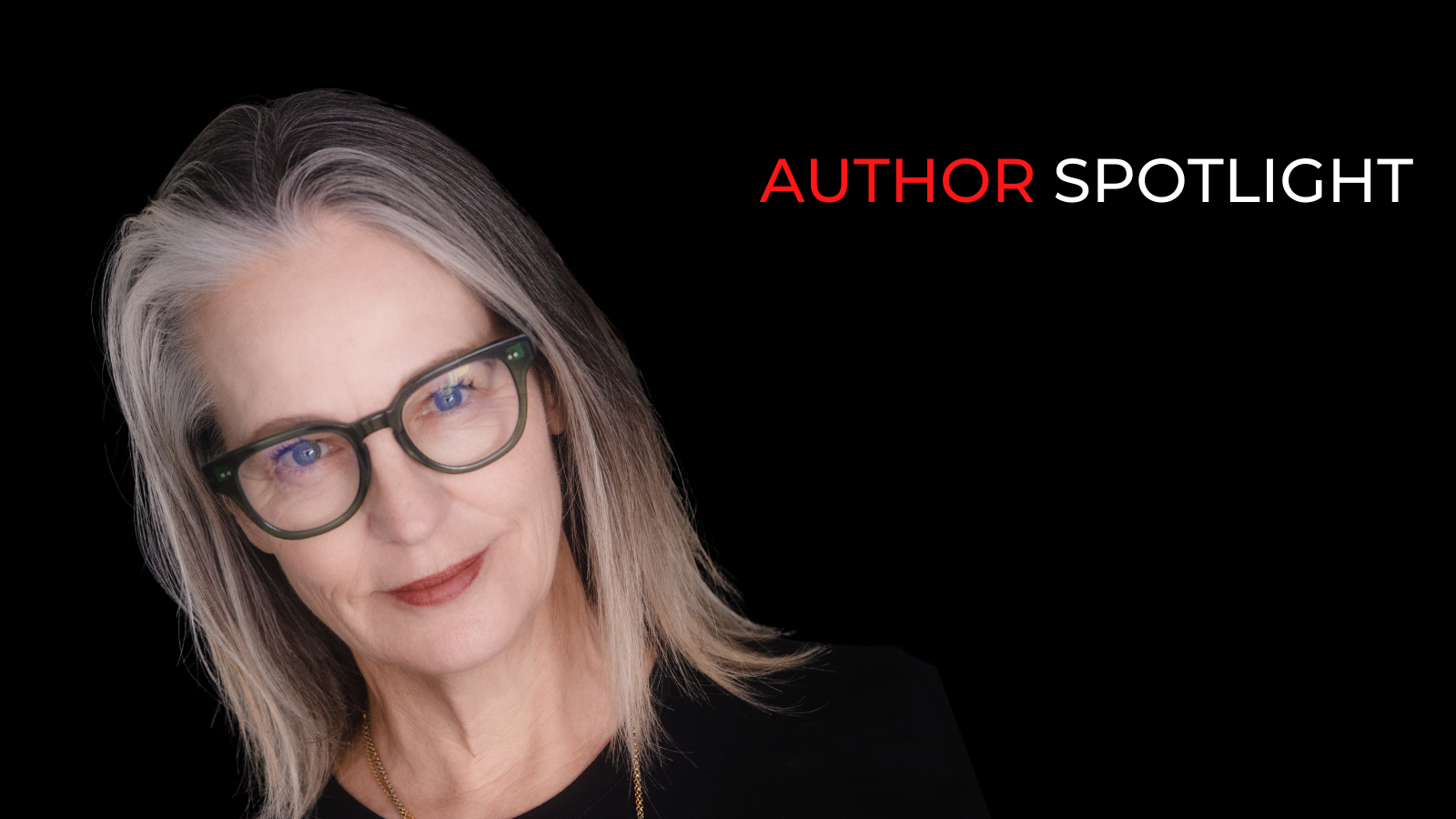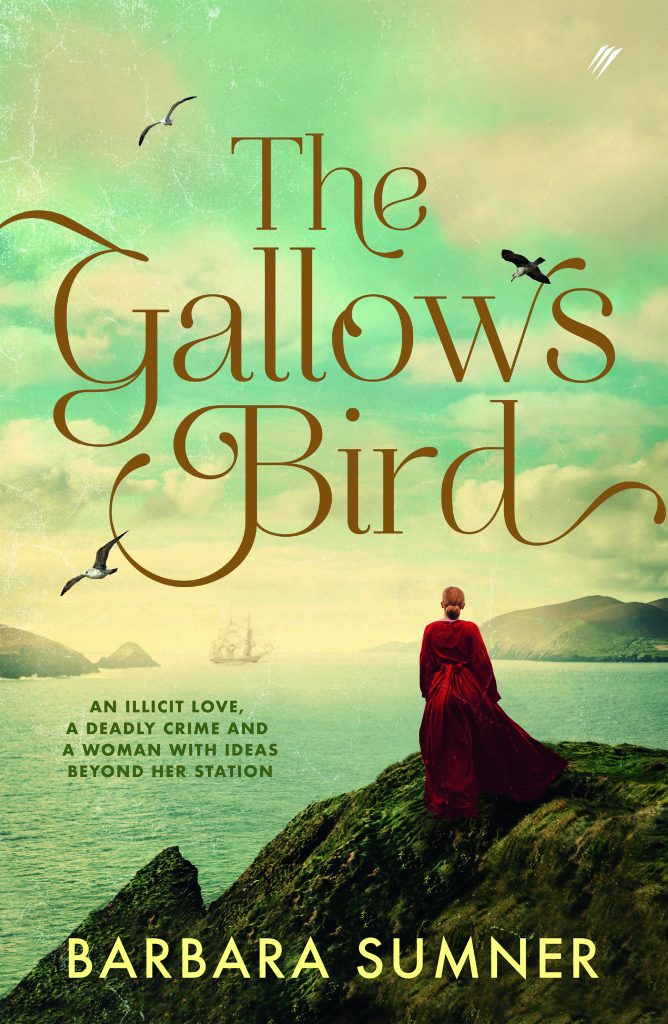For the October Author Spotlight, New Zealand author Barbara Sumner spoke to Georgina Baron-Ross, about her debut novel, The Gallows Bird (Pantera Press).
First, congratulations on your debut novel, The Gallows Bird! With an impressive background in publishing, event production, television, and journalism, you’ve now added ‘author’ to your already rich catalogue of experience.
We’re excited to spotlight this debut novel that whisks readers away to 19th-century London. Meet ‘Birdie,’ a young woman of lowly station with grand ambitions. Despite her humble beginnings, Birdie believes she is destined for finer things, driven by the legacy of her aristocratic mother.
Birdie’s story is one of daring and determination, as she stops at nothing to claim the life she believes she deserves. Her journey is an illicit adventure of chasing dreams, love, and freedom, eventually leading her to Australia. Through her eyes, we witness the harsh realities of life for female convicts in the early settlement of Sydney Cove.
Will Birdie’s relentless pursuit of her dreams lead her to the future she envisions? Join us in exploring the twists and turns of her captivating journey in The Gallows Bird.
Your protagonist, Birdie, is tenacious and ambitious. What inspired you to create a character with such a strong drive, and how did you craft her journey from the streets of London to the convict settlements of Australia? Was Birdie inspired by anyone in your personal life?
So often, we focus on the wealthy and privileged few. But I am more interested in marginalised women. My first inspiration was the 1851 oil painting The Outcast by Richard Redgrave. It depicts a family’s reaction to a daughter bearing an illegitimate child. I am sure this resonated so strongly because of my history. I was that illegitimate infant, and my mother was that cast-out woman. When Birdie first came to me, and as the words accumulated on the page, I felt the emotional dislocation of illegitimacy as a tightness in my chest. Over time, as Birdie revealed herself to be in charge of my keyboard, that feeling eased. Increasingly, I became in awe of her – a bold, wild woman who refused the dictates of her times. Captivated by the beauty of silk, her desires, and desperation cause her to risk everything. To me, inspiration in any form of creative endeavour is a mystery.
Researching the lives of female convicts in early Australian settlements is of great interest to many readers. What did you find most surprising or enlightening during your research, and how did those discoveries influence Birdie’s story in The Gallows Bird?
The Gallows Bird is the opposite of the TV series Bridgerton. Birdie is an under-laundry maid in a London manor house. She knows the secrets of the laundry, how to return the purity of white rags from the dregs of the curse, and how to use aged urine to bleach away any stain. But the one thing she fears most is the drudgery of her life.
I hate doing laundry, probably because I had three under three by the time I was 23, and the wringer part of the old washing machine was permanently broken. And yet, I’m 64 and still fascinated by ‘women’s work’ and especially the efforts required to make the world clean and presentable. The research into laundry culture, the strata of the manor house, and the ways the servants glean information were all fascinating to research, as were the ways women were made into criminals to enable the government’s agenda. The world of the convict ship gave me nightmares. The majority of available research is most often from the male perspective – either male convicts’ or women’s experiences interpreted through the male gaze. To fill that graphic and life-challenging shipboard world with these amazing women was a privilege. Only after I’d completed the book did I discover three of my forebears were convicts.
Your novel’s writing style is evocative and sensory. Do you consciously use this approach to immerse readers into the story’s setting?
Thank you. I am not sure how conscious it is. I wear noise-cancelling earplugs when I write, effectively shutting out the world. Perhaps this adds to my immersion in the world that seems to rise spontaneously as I write. I know my family gets exasperated with me for talking endlessly about the people I’m spending so much time with. They know they are not ‘real’, and maybe this is something I forget. Even now, I can feel Birdie’s presence.
In The Gallows Bird, does the iconic dress colour red hold a specific symbolic significance within the story, particularly in relation to Birdie’s journey and experiences? And if so, what is the origin of that significance for you.
Red is the colour of courage, signifying great passion. This is who Birdie is, even when she does not realise it. For Birdie, it signifies the loss of her mother and the boldness required to change her life. I have a blood phobia, and for me, that dark red signifies the one thing that churns my stomach. All women must contend with blood. And it is the one thing that unites us all.
What’s currently fuelling your creative energy?
I am currently contemplating the privilege of ageing and how to translate that honestly. I am told I am not good at being ‘present’ or ‘in the moment,’ and I wonder if this trait is the necessary ingredient to get lost in the emerging story.
And lastly, we’re eager to know— what exciting project are you diving into next?
I have a new novel almost finished. Externally, The Mystifications is based on a true story about a cult that arrived in a small New Zealand village in 1916. But internally, it is the imagined life of the daughter of the cult leader. I found her grave, and I often sit with her and discuss her father’s crimes, her complicity, and how she made her life around them. How do we construct ourselves around the circumstances we find ourselves in? This one question fuels my life. The answer remains elusive.
More info here.

